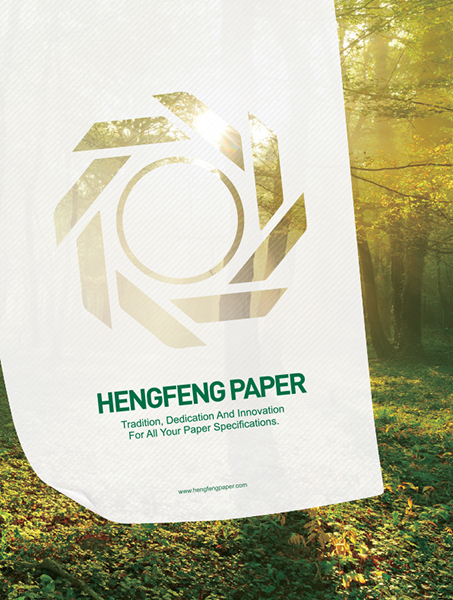Proper Context
- Also in TR Print Edition Regulation
- February 1, 2021
- 0
- 10 minutes read


Will the EU consider the relative risk of e-cigarettes when it revises its Tobacco Products Directive?
By Stefanie Rossel
Two days at the beginning of next month are likely to have a significant impact on the future of tobacco harm reduction (THR) in the European Union (EU). In its plenary meeting on March 3–4, 2021, the EU Scientific Committee on Health, Environmental and Emerging Risks (SCHEER) will adopt its final opinion on e-cigarettes. Whether it substantially differs from the committee’s preliminary opinion, published in September 2020, remains to be seen.
Under article 28 of the EU Tobacco Products Directive 2014/40/EU (TPD), the European Commission (EC) has been tasked with reporting to the European Parliament, the European Council and other committees on the application of the directive by May 20, 2021. The article stipulates that the commission shall review the directive in light of scientific and technical developments in order to consider legislative amendments and that it shall pay special attention to e-cigarettes. In this, it is to be assisted by experts such as those from SCHEER so that it has all the necessary, most recent and up-to-date information at its disposal.
In article 20 of its 2014 version, the TPD standardizes safety and quality requirements for nicotine-containing e-cigarettes, such as provisions on the ingredients that can be used in e-liquids and maximum nicotine content. The SCHEER report, meant to be a scientific review of the health effects of e-cigarettes, was one of several studies the EC mandated on the application of the TPD on the use and opinions of consumers of tobacco and related products and on product perception. It is important as it may be part of the basis for a further revision of the TPD, which is under consideration. And it could have contributed to making the EU a forerunner in sensible regulation of tobacco and nicotine products, proportionate to their risk.
However, vapor advocates were dissapointed when the SCHEER committee released its preliminary opinion on Sept. 23, 2020. The Independent European Vape Alliance (IEVA) called the report “fundamentally flawed.” Christopher Snowden, head of lifestyle economics at the Institute of Economic Affairs, described the document as a “step backward.” Clive Bates, director of Counterfactual Consulting, called the report “misjudged, poorly executed and unhelpful.”
Areas of concern included the committee’s conclusion that there is insufficient evidence that e-cigarettes are a useful tool for smokers seeking alternatives, despite quoting two randomized control trials stating the opposite. The committee was also accused of ignoring scientific literature published after April 2019, most of which supports the argument that vaping facilitates THR. In its risk assessment, critics said, the SCHEER committee had not chosen a comparative risk-based approach but a simpler hazard-based approach, stating the potential risks of using e-cigarettes without even attempting to compare these with the risks from cigarette smoking, which are exponentially higher.
According to the report’s findings, there is strong evidence that e-cigarettes are a gateway to smoking. The data on which this conclusion is founded, however, is almost exclusively from the U.S., which has an entirely different regulatory regime. The committee also failed to acknowledge that in the EU, smoking among young people has declined significantly.

Ignoring relative risks

“My view, from a regulatory perspective, is that the preliminary SCHEER opinion does not really address the most pertinent question on harm reduction, which has become even more pressing since the 2014 TPD,” says Abrie du Plessis, an associate at the South African Trade Law Center in Cape Town, who spent more than a decade following the developments of the World Health Organization’s (WHO) Framework Convention on Tobacco Control (FCTC) and the the 2014 TPD. “This question is about positioning e-cigarette effects and impacts relative to those of combustible cigarettes. There is, in my view, an urgent need to do this in a comprehensive and evidence-based manner. The preliminary opinion unfortunately fails to do this.”
A possible explanation is that the SCHEER committee simply considered such a comparison to be outside of its remit. In the minutes of its most recent working group meeting on Dec. 2, 2020, it states, “The mandating Commission service clarified that there was no specific mentioning of harm reduction in the terms of reference.”
“This is very significant,” du Plessis explains. “What it means is that there is a strong possibility that any further submissions on this topic could be disregarded and that the final opinion, to be adopted on [March 3 to March 4, 2021], will still not address the wider issue of harm reduction. The final opinion will then probably not make any real contribution in respect of the wider policy debate on tobacco harm reduction, and this narrow focus may therefore limit its value for EU policymakers. If the opinion indeed stays the same, then the Commission will have to look elsewhere for answers to the policy questions on harm reduction that it may want to address in the next TPD.”
The public health community, du Plessis adds, is divided on which tobacco harm reduction policies to support. The WHO holds an ideological bias against e-cigarettes, favoring cessation of all nicotine consumption. As party to the WHO’s FCTC, the EU is likely to take its cues from the global health body.
“This bias could have played a role at the SCHEER level, but I think that there is another possibility, which is that the committee simply opted for quite a narrow interpretation of its mandate, and in the end did not really address the wider issue of tobacco harm reduction or its rapidly evolving evidence base,” says du Plessis. “The SCHEER report is, however, only one of the inputs into the upcoming Commission report to the European Parliament, and the debate could soon shift to the actual mooted proposals, to a wider range of inputs to be considered and to inclusive participation in the further legislative process.”

Under pressure
In line with its formal stakeholder dialogue procedures, the SCHEER is obliged to seek feedback from the scientific community and other stakeholders before publishing its final opinion. During the commenting period following the release of the preliminary opinion, which ended on Oct. 26, 2020, the SHEER received 691 contributions. Any proposed changes to the opinion had to be tabled by Jan. 12, 2021.
However, the SCHEER may not feel obliged to take all comments into consideration; the EU has received much criticism about the level of tobacco influence in the shaping of the 2014 TPD. Besides, provisions in the TPD require it to respect international treaties such as the FCTC and its article 5.3, which discourages tobacco industry involvement in policymaking.
“My view is that the committee will certainly consider the comments it receives, but it will act in line with its stakeholder dialogue procedures,” explains du Plessis. “The point to keep in mind is that the committee will carefully vet all comments received for relevance to the preliminary opinion and to its interpretation of its mandate.
“On top of this, all submissions will have to comply with its further detailed rules of procedure. This means that there is a clear risk that a significant number of submissions may be disregarded. There is also significant time pressure as the final opinion is now almost two months overdue and must feed into the article 28 report planned for [May 20, 2021].
“I agree that article 5.3 of the FCTC can create pressure on the committee to exclude studies or evidence originating from [the] industry. I, however, think that openly disqualifying peer-reviewed scientific studies simply on this basis would be detrimental to the standing of the committee.”
The EU Commission finds itself in the less-than-ideal situation that its TPD review will commence before the next FCTC Conference of the Parties (COP9), which had to be postponed to November 2021 due to the coronavirus pandemic. “The 2014 Tobacco Products Directive confirms that developments, such as internationally agreed rules and standards on tobacco and related products, are relevant to the EU legislative process,” says du Plessis. “Before the Covid-19 pandemic, the EU was in a position that it could benefit from possible discussions at COP9, which was originally scheduled for November 2020, before it had to publish its own article 28 report—with proposed amendments to the TPD—by [May 20, 2021]. The postponement of COP9 by one year means that the EU Commission will no longer enjoy this benefit. With its own scientific opinion not addressing key questions on harm reduction in sufficient detail, a valid question would be whether it is at this stage in a position to propose any further evidence-based measures on tobacco harm reduction.”

